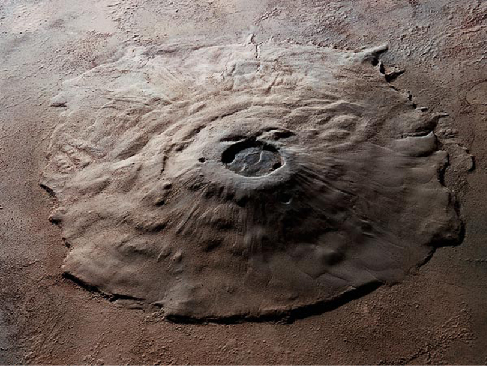Mars, The Red Planet
If you have ever wondered about Mars, we talk a lot about its properties and what makes it wonderful in this section.
Mars

Mars is a fascinating planet! Seen through a telescope, it is easily recognized. In fact, it is probably the most studied planet other than Earth. It has polar ice caps and other interesting surface features.
Rotation
Mars has a day very similar to ours on Earth. It is 24 hours and 37 min. This is an average because Mars has been observed for well over a hundred years. Mars also has its own seasons. Seasons are a consequence of a planet tilting as it rotates.
Atmosphere
The atmosphere of Mars is mostly carbon dioxide. It’s around 95%, to be precise. However, it is much colder than Venus is. It is actually cold there a lot. There is very little oxygen on Mars and the air is very thin.
Surface
The surface of Mars has a lot of impact craters. It has volcanoes, canyons, and ice caps. It also has many channels that most think were cut by surface water. This is very exciting and is why we hope some type of life might be found there.
There is just about constant wind there. It ranges from a light breeze to a raging windstorm. These storms strip the surface of much of its soil. Bare rock is left with little evidence of the red dirt that was there before.
Much of Mars’ surface is volcanic basalts. These are caused by lava flows that stretched out over great distances. In fact, half the planet is heavily cratered. Most of this terrain is in the southern hemisphere. Around its equator, there is a region consisting of mostly very large volcanoes.
The polar ice caps look remarkable. However, they are not just water that is frozen. They are a combination of \( CO_2 \), which is dry ice and water ice. The northern pole has the most water ice.
Characteristics
Mars has a diameter just over half of Earth’s. It has a lower density though, which means its mass has more silicates than heavy metals. Consequently, it has a small metal core instead of a large one like Earth’s. There is not a planet-wide magnetic field, but there probably was one a long time ago.
Volcanoes
The plains of Mars in the north are very typical of volcanic lowlands. They are lower density and pretty old. This tells us when Mars had a lot of geologic activity going on. The Tharsis area of Mars has super large volcanoes. Smaller volcanoes dot most of the planet, though. The largest one is Olympus Mons and is truly incredible. I don’t do a lot of pictures in my writing but this one deserves a good one and I have included it below.

It is quite possible that this massive volcano is still active today. I, personally, would love to see it active and what it can do.
Climate
Because there is evidence of rivers long in the past, we can infer that the temperature must have been higher at some point. The atmosphere was probably thicker also. It has the same greenhouse gasses that Venus does, so we can assume they all dissipated away from the thinner atmosphere. When the atmosphere thins, the planet loses the ability to retain heat. This is why Mars is a colder planet.
Conclusion
Most of what we know about Mars is from spacecraft that landed there. It is a very cratered planet. A lot of that has to do with the very thin atmosphere, it does not keep anything out. The south hemisphere is a great example of the meteor bombardment.